Low Water Levels in Kenya’s Mara River
Mara River Basin
|
NEW ESRI StoryMaps: What's On Our Shelves & NWNL Song Library & No Water No Life ESRI |
Mara River Basin
Amanda Subalusky
Research Coordinator for Florida International Univ. on a USAID project for The Global Water for Sustainability; author of 2007 Mara River Environmental Flow Assessment
Chris Dutton
Volunteer for Global Water for Sustainability/GLOWS [consortium of Florida International Univ., WWF, World Vision and CARE, promoting Mara River management for ecosystem, biodiversity and human health]
Alison M. Jones
NWNL Director & Photographer
Alison Fast
Barefoot Workshops Videographer
Observing the Flow – From a Riverbank
Discussing the Present – In the Tent
Future Considerations – Overlooking the Savannah
All images © Alison M Jones. All rights reserved.
This is a compilation of three discussions on the flow and water quality of the Mara River and water needs of local people, small-scale and commercial farmers, wildlife and ecosystems. In 2004, Amanda and Chris started this effort to promote transboundary stewardship and more efficient management of upstream-downstream water management. Fortunately, Kenya has strong laws, but their enforcement is challenging due to a lack of resources.
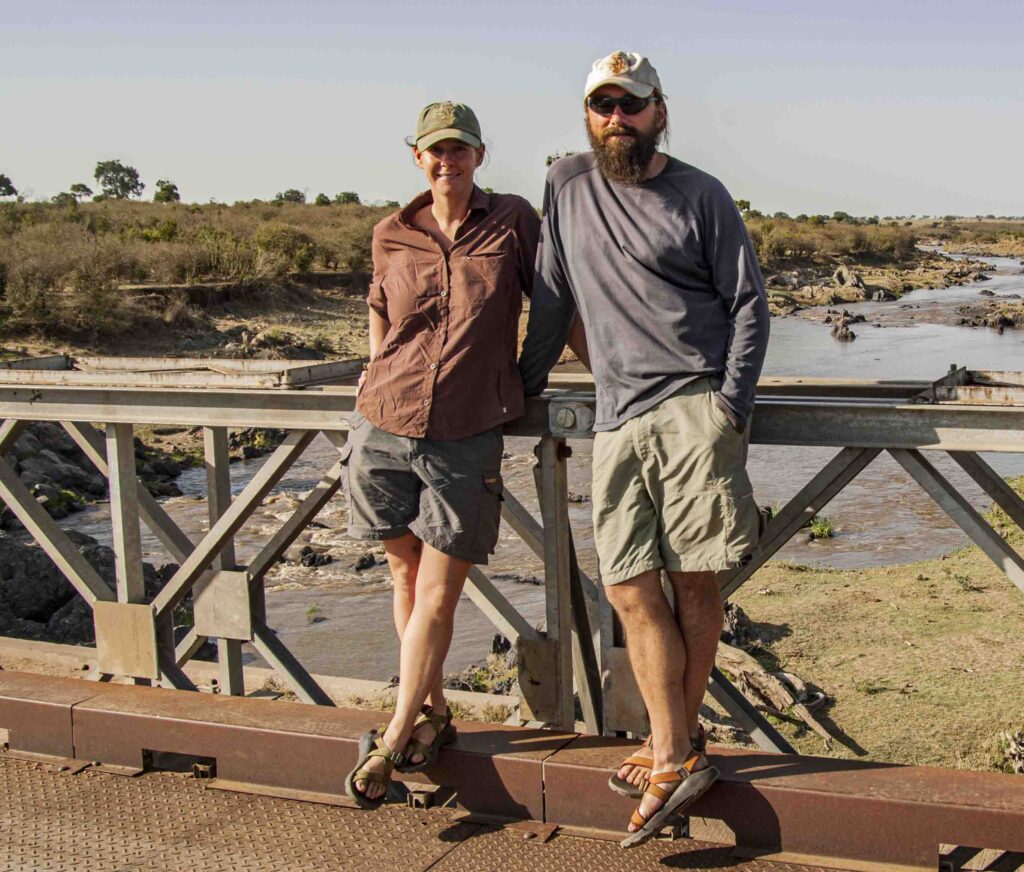
Observing the Flow - From a Riverbank
NWNL As we stand next to the Mara River as it crosses from Kenya to Tanzania, how would you describe its values?
AMANDA The Mara River is one of the most famous rivers in the world. Most people in the US have seen it on TV as the site of one of the greatest remaining spectacles of nature: the large migration of a million wildebeest in the Serengeti-Mara Ecosystem as they cross the Mara River. This iconic scene in the midst of Kenya grassland brings many tourists here every year to see it. But this spectacular sight depends on the health of the Mara River – a great model for understanding transboundary resource management.
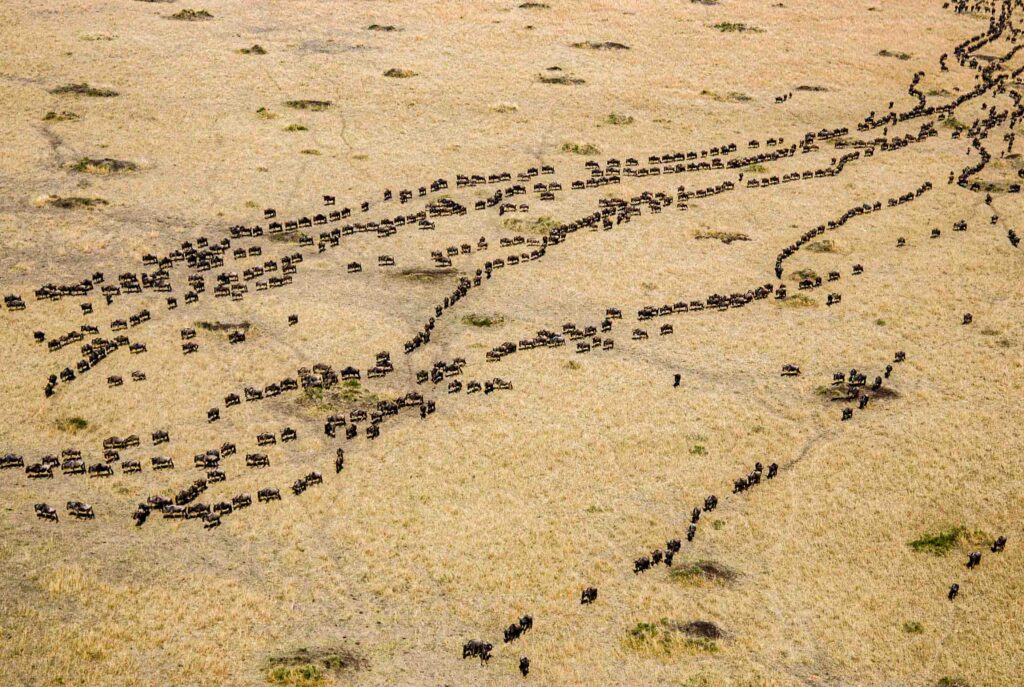
NWNL What are the main challenges to a healthy Mara River – especially in this year’s extreme drought?
AMANDA The primary threat to the Mara River Basin is the loss of natural land cover as agricultural lands increase. Now, when it rains, water rushes off the land. When it’s dry, there’s no water to seep in to support the river’s flows.
The second main threat is water quantity, due to land change. There is now unregulated and illegal removal of water from the Mara River and its tributaries for new irrigation systems, tourism facilities and urban centers. Also, people without permits illegally withdraw water from the river.
CHRIS The third major challenge for the Mara River Basin is discharged wastewater entering the river. None of the many urban centers have functional wastewater treatment systems — nor do most tourist lodges within the reserves.
AMANDA Those issues compound one another. Combined low flows and high effluence coming into the river are creating real declines in water quality.
NWNL What solutions could protect the Mara River, its wildlife and greater watershed?
AMANDA National Water Laws in Kenya and Tanzania require their Reserves to protect water flows. So we’re defining sufficient levels needed for sustainable ecosystem health and basic human need (commonly set at 25 liters per person per day). I think solutions must come from local communities on the river. They must monitor themselves and their neighbors. They must ask: “Who’s taking water out of the river? Do they have a permit to do so?”
Residents must realize that when the river is low, they can’t take water out of the river. People must find ways to store water in the wet season for use in the dry season. The basin’s storage capacity must be developed – preferably by creating small off-channel surge capacity that won’t have serious ecological implications. This could allow local people to capture excess water available during the wet seasons; store it; and use it into the dry season without further stressing the river.
NWNL With climate change, we’re going to have these droughts again and again. It seems critical that there be efforts to educate people about that.
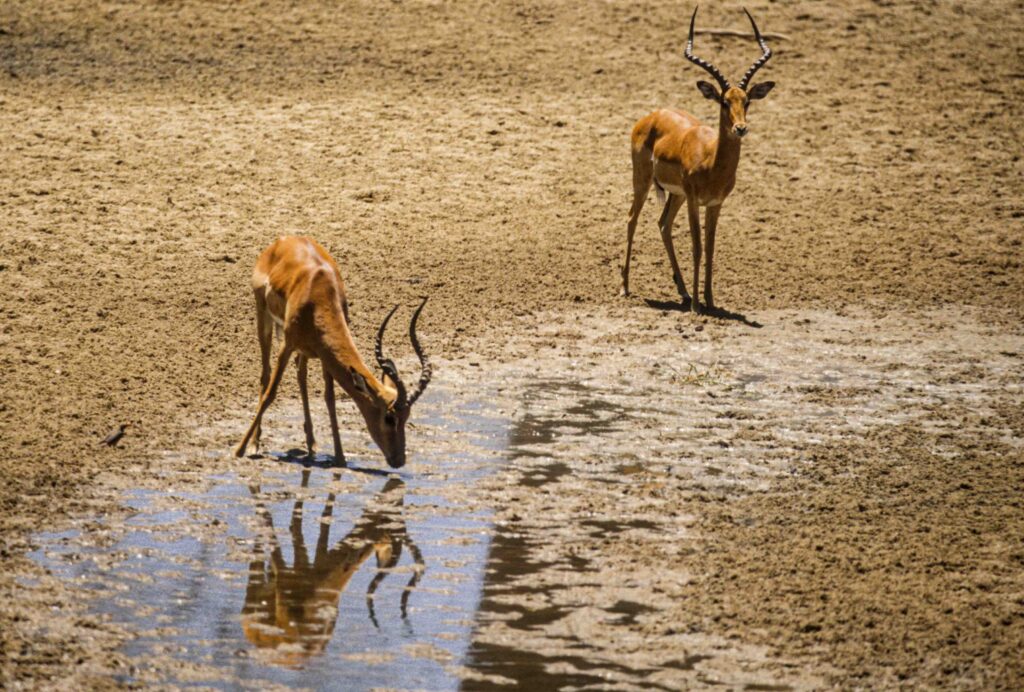
AMANDA Yes, a river’s surge capacity is critical as we face increasingly less predictable rainfall patterns. There will also be increasingly severe and long-lasting droughts. We must find alternative ways to use water when it’s available.
CHRIS So, communication and education among local stakeholders are key. We’ve already seen and are fostering very promising things happen with communication between those downstream and upstream. We see some very good things happening. We must continue supporting communication and education here.
AMANDA While the Mara River is still flowing and in relatively good shape, we have a unique opportunity. Yet, we see critical warning signs from Tanzania’s Ruaha River. The Ruaha is larger than the Mara River; but it too flows through a famous conservation area. However, in 1993, unregulated abstraction and poor resource management stopped the Ruaha’s dry season flow. Since then, it has stopped flowing every year for longer and longer periods of time.
People there now work very hard to restore some flow to that river during dry seasons. Here, while the Mara River still flows, we have a unique opportunity to save it for both people and ecosystems that depend on it.
CHRIS One problem this year is that the wildebeest are just walking across the river. They’re not even trying to swim. Consequently, there are no large-scale die-offs due to wildebeests drowning or being killed by crocodiles in the river.
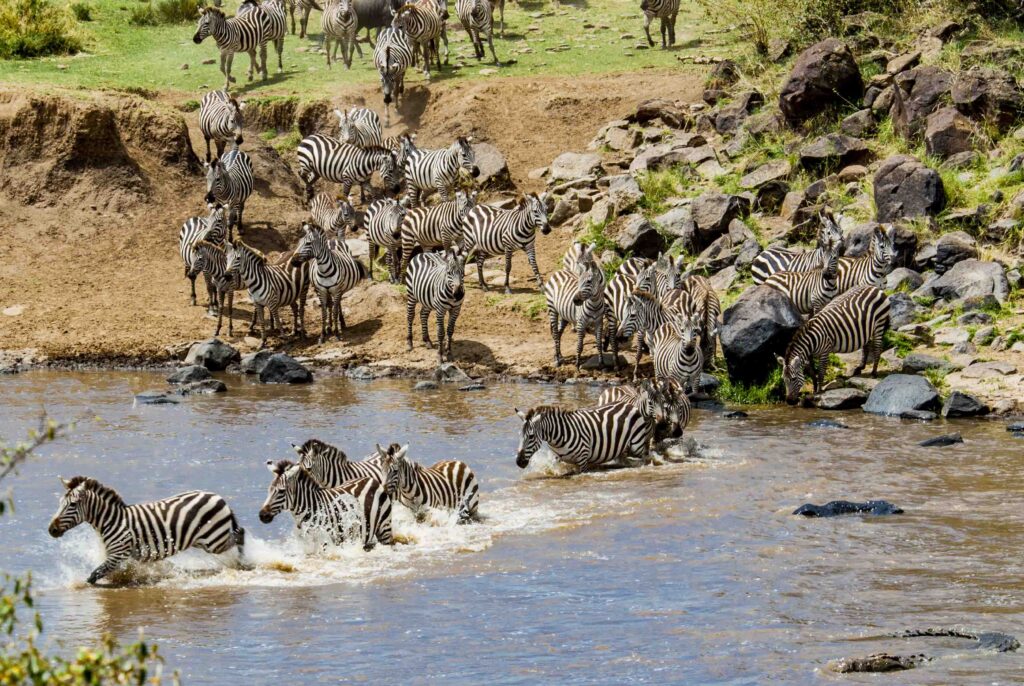
AMANDA If the river were to dry up completely, it could negatively impact the wildebeest migration. In essence, the lower part of the wildebeest circular migration pattern has no permanent bodies of water. Thus, the Mara River is the only perennial source of water for that whole migration. With this very sensitive relationship between wildebeest and the river, some scientists say that their migration and thus the whole ecosystem would crash if the river stopped flowing.
Right now, we see a potential disruption in the ecosystem due to falling water levels. A host of impacts may already be changing the system in several ways. Chris and I feel this year’s die-offs in the wildebeest population could really skew the ecological balance into the next year.
CHRIS With this year’s low water levels in the river, not as many wildebeest are dying because if they don’t have to swim, crocodiles can’t prey on them. Thus, the wildebeest population will be higher than normal into the next part of the migration.
AMANDA Additionally, there could be a domino effect of other as-yet unknown ecological implications to these falling water levels.
Discussing the Present - In the Tent
NWNL What can be done to protect this world-renowned watershed?
CHRIS The best solutions probably involve more communication between the “upstreamers” and “downstreamers” and between the “haves” and “have-nots.” One of the best means to foster cooperation is to build on communication channels that are already developed.
AMANDA Communication is a great tool for implementing watershed management practices for protecting buffer zones and best cultivation practices for terracing steep slopes, regulating fertilizer usage and controlling run off. Communication also helps people understand how their actions influence people downstream.
CHRIS As well, education builds support for best practices like offsite storage for times of drought. People must realize these benefits and how they can be done cost-effectively. A strong effort is being made here to educate adults and children in these best practices. We just need just more resources to share these messages.
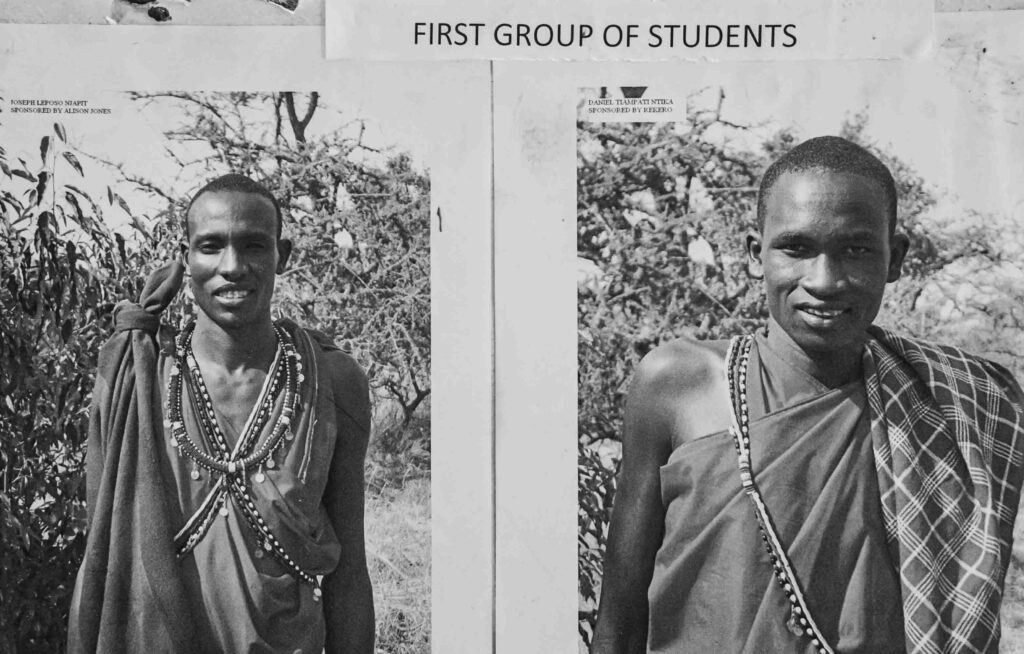
AMANDA Yes, grassroots structures like water-users associations are allowing neighbors to educate neighbors.
World Wildlife Fund [WWF] is establishing a “payment for ecosystem services” scheme here to tie ecosystem-service providers to their users. People whose land and water management practices affect river flows downstream should work with water-resource users downstream. Councils that own and manage protected areas and tourist lodges that depend on a healthy Mara ecosystem and Mara River for revenue should fiscally support the water-users associations or other stewards to help pay implementation costs for best management practices upstream.
Both Kenya and Tanzania National Water Laws call for protection of “reserve flows” — ie flows sufficient to provide for basic human needs (commonly defined as 25 liters per person per day) and ecosystem health and sustainability.
NWNL Is that enforced?
AMANDA The focus of our research is to determine the minimum flow levels needed to support a health river ecosystem so we can determine what is left for extractive permits to support healthy populations of people.
We’re now seeing that in normal rainfall years, there’s plenty of water in the Mara for a human needs. However, our evidence shows that drought-year flows in the Mara’s main tributaries are not meeting reserve levels.
In dry seasons of drought years, the river’s upper catchment does not meet Reserve flow levels even in the mainstream Mara just above the protected areas. This year in March, people said levels were lower than they’d ever seen in the Mara River, and at half of the level recommended for the very driest reserve flow measurements. That’s when we started to see real breakdowns in both ecosystem and human health in the basin.
NWNL What will happen if the rains don’t come this season?
AMANDA It won’t be really drastic this year, but in the future, the river might stop flowing. Levels could get very low, creating extremely anoxic conditions. We’d then probably see typhoid outbreaks. Those are things that it seems will happen.
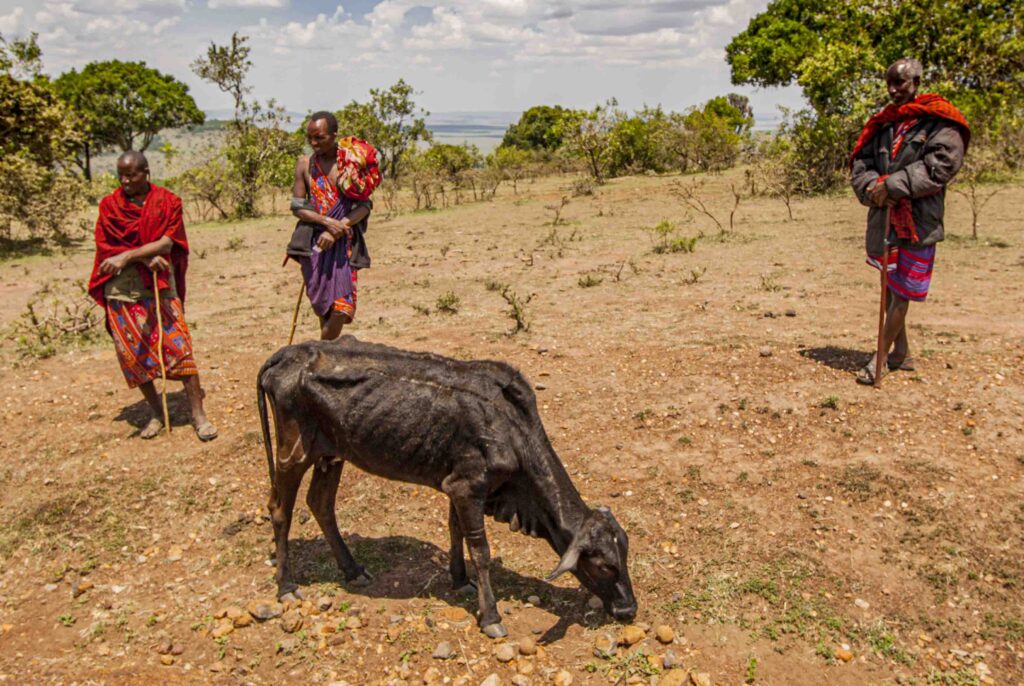
NWNL What happens if El Nino rains, or even the regular November rains, don’t come?
AMANDA If the rains don’t come, we could see very dire declines in ecosystem health in the river and increasing levels of nutrients from all the wildlife and upstream human sources. We’d see very sharp declines in dissolved oxygen, probably more fish kills, and even stark declines in human health, including increasing typhoid outbreaks.
We’ve spoke with public health officer for Bomet District last week. He told us that they see typhoid outbreaks within 3-kilometers of the Mara tributaries, and they spread out from there. They saw the biggest typhoid outbreak this last year in March when the rivers fell very low. Then, two weeks later, rains came back, the rivers came up and things improved. Now, we’re in a 3-year drought, so another failure of rains could cause some fairly dire circumstances.
NWNL Are the threats mostly from climate change, deforestation, or erosion because of the farming practices?
CHRIS I think climate change has a role because the locals are used to traditional weather patterns here. They’re not able to adequately plan their crops or predict what’s going to happen.
AMANDA Analysis has shown the issue is not less rainfall, but different timing of rainfall. That has a significant effect on farming, and increases people’s desire for irrigation. I think eventually there’ll be more reliance on the river and surface water flows for irrigation.
You’ve come down from the Mau Forest which is creating significant problems, but it’s not the only challenge facing the river.
NWNL What do you list as the top three challenges to the Mara River?
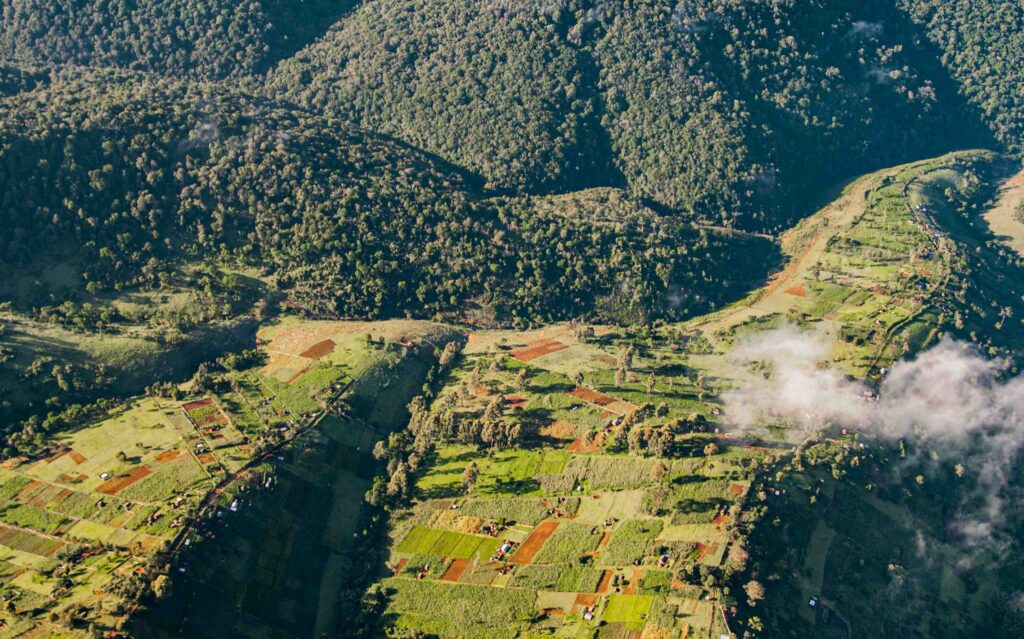
AMANDA Deforestation of the Mau headwater’s a significant problem, but that comes under “land cover change” in the upper catchment and that also includes the area downstream of the Mau too, because it’s all steep-sided, subsistence agriculture from Mau Summit to Mulot.
Secondly, I worry about unregulated abstraction because although the Water Resource Management Authority folks are very knowledgeable, well trained and passionate, there are not enough of them to monitor who is abstracting what, or to stop those illegally abstracting all the time.
CHRIS Untreated effluence would be the third issue. There’s almost no wastewater treatment for any market center or most lodges.
AMANDA Most of the lodges – if they’re doing anything – only have a soak pit or a septic tank. The lodges right on the river are probably just leeching into the river.
NWNL Are there any lodges leading the way on reducing their effluence?
AMANDA There are. Governor’s Camp is starting to monitor water this week. WWF is working with lodges to build wastewater treatment wetland systems; and there are other good examples. Siana Springs probably has the nicest one; and four or five lodges have done a really good job of putting in an attractive natural system that is also very effective. There are five camps with septic systems.
NWNL I understand Rekero Camp has a constructed wetlands for this purpose. Plus, apparently your report informed them about E. coli, so Rekero Camp trucks in water for showers and cooking. They take nothing out of the river.
Amanda and Chris, let’s end on this positive note! Thank you for being so generous with your time – and thank you for all you are doing to analyze the Mara’s critical water quality and availability. Good luck to you; and may all those involved heed your warnings.
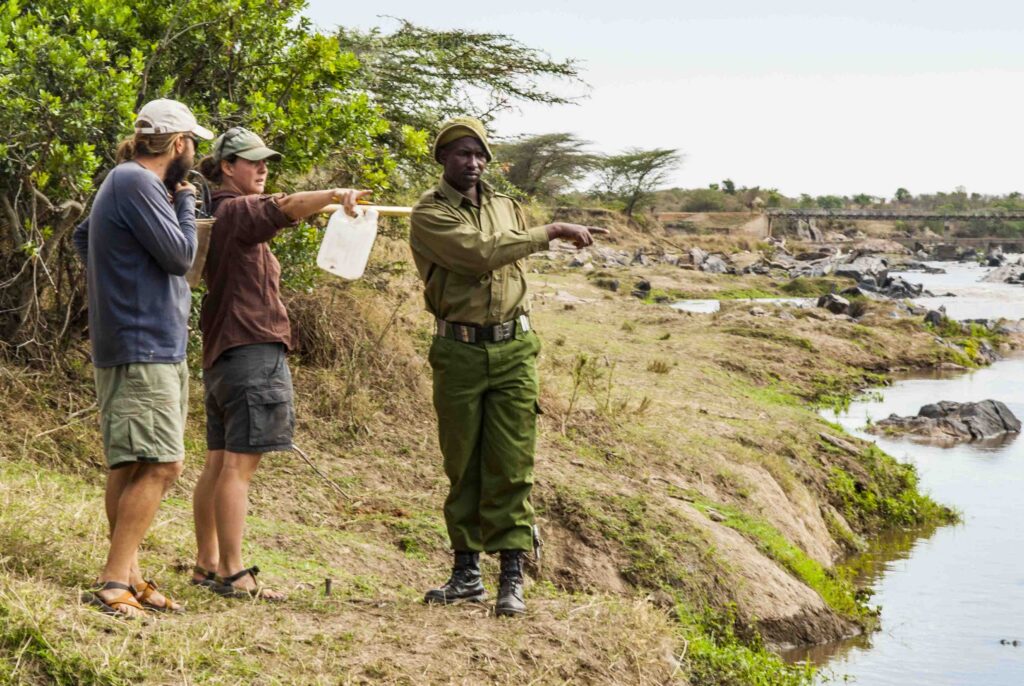
Posted by NWNL on October 12, 2023.
Transcription edited and condensed for clarity by Alison M. Jones.
All images © Alison M. Jones, unless otherwise noted. All rights reserved.
